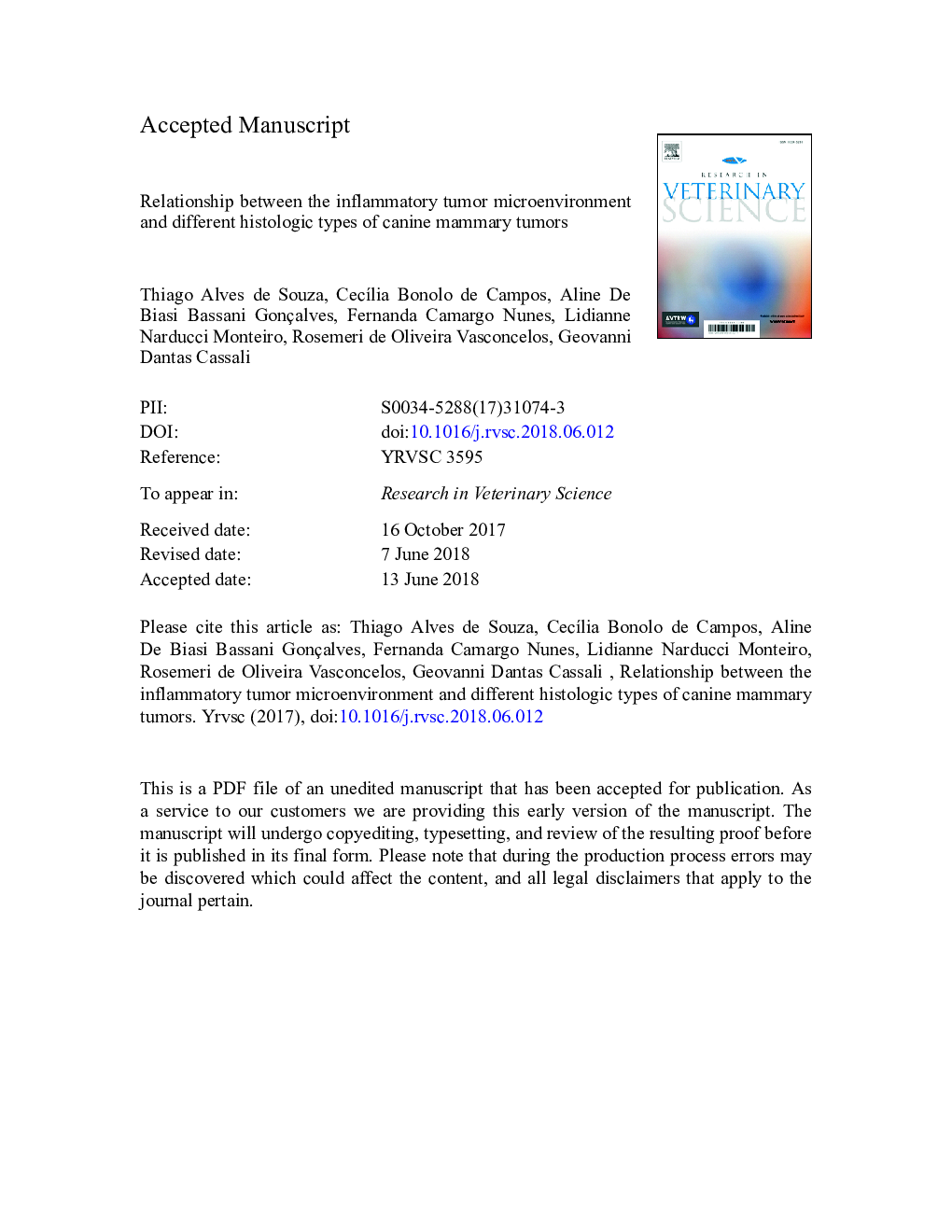| Article ID | Journal | Published Year | Pages | File Type |
|---|---|---|---|---|
| 8503912 | Research in Veterinary Science | 2018 | 22 Pages |
Abstract
Mammary neoplasms are the tumors with higher incidence in female dogs. Among the factors that contribute for the development of this and other neoplasms, the inflammatory tumor microenvironment plays a crucial role. Several studies reported important roles for lymphocytes, macrophages, plasma cells, neutrophils, eosinophils and mast cells in this context. In the present study, our aim was to evaluate the number of profile cells of inflammatory cells and area of tumor fibrosis and the relation of these features with canine mammary tumors of different histologic and clinical presentation (benign mixed tumor, carcinoma in mixed tumor, solid carcinoma and tubular carcinoma) Counting and staining of inflammatory cells and tumor fibrosis were performed through histochemistry, while counting and staining of CD4+, TCD8+ and FOXP3+ lymphocytes were performed through immunohistochemistry. Statistical analysis of the association between densities of inflammatory cells, tumor fibrosis and histologic types revealed significant difference for plasma cells (pâ¯=â¯.035), neutrophils (pâ¯=â¯.0113), macrophages (pâ¯=â¯.0047), and tumor fibrosis (pâ¯=â¯.05). The found data suggest associations between high number of neutrophils and aggressive mammary tumors, between high densities of plasma cells, macrophages and CD8+ cells and between low number of profile cells of CD4+ cells and less aggressive tumors. Larger areas of tumor fibrosis showed relation to more aggressive canine mammary tumors.
Related Topics
Life Sciences
Agricultural and Biological Sciences
Animal Science and Zoology
Authors
Thiago Alves de Souza, CecÃlia Bonolo de Campos, Aline De Biasi Bassani Gonçalves, Fernanda Camargo Nunes, Lidianne Narducci Monteiro, Rosemeri de Oliveira Vasconcelos, Geovanni Dantas Cassali,
